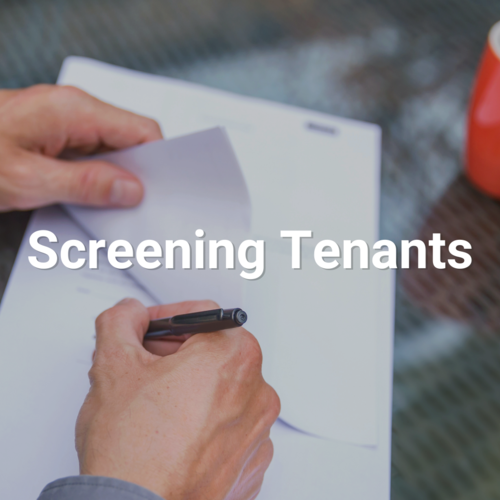When you live in a home owned by someone else, you are living in one of four types of tenancy: fixed-term, periodic, tenancy at will, or tenancy at sufferance (also called holdover tenancy). It’s important for tenants and landlords to understand the rights and responsibilities that come along with each arrangement.
Fixed-Term Tenancy
The first type is fixed-term tenancy, whereby the tenant and landlord agree to a specific amount of time the tenant will lease the property. It may be a month; it may be a decade. For residential leases, it is usually a year. With a fixed-term tenancy, contract conditions are locked in at the beginning—all the details about rent payments, whether there can be pets, and how many people can live there, for example, are spelled out ahead of time.
In long-term commercial leases, as in a ten-year lease, rent increases may be included based on a specific schedule or tied to a specific benchmark. For annual residential leases, rent payments typically remain static. Unless there are unusual circumstances, such as a bankruptcy, the only legal way to break the terms of the lease is for both tenant and landlord to agree. Of course, there are plenty of illegal ways to break the terms of a lease.
Periodic Tenancy
The next type is periodic tenancy. This agreement has no set end date and automatically renews at the end of each period, whether that be a week, a month, or whatever amount of time is agreed upon by tenant and landlord. If you are in a month-to-month agreement, this is a periodic tenancy. These are sometimes done by verbal agreement, but I highly recommend putting everything on paper because memories fail, and understandings can differ.
The periodic tenancy ends when one party gives notice. Typically, either partner must give 30 days’ notice.
Tenancy-at-Will
Tenancy-at-will is a less formal affair. This occurs when a landlord agrees that a tenant can live on their property without specifying for how long and without charging rent. As soon as rent is expected, the type of tenancy changes. Until then, tenancy-at-will remains in place. An example would be allowing someone to crash on your couch rent-free for a few months. Be aware that once you allow someone to live in your house, you cannot kick them out on a moment’s notice. In California, a landlord must give an at-will tenant 30 to 60 days’ written notice depending on the length of tenancy before forcing them out—similar to the process for terminating a month-to-month tenancy.
As weird as it may seem to do a written agreement with a friend who just needs a place to stay for a bit, it’s wise to protect yourself by writing up a short agreement that says your friend can stay rent-free for an agreed-upon amount of time, specifying start and end dates. This can prevent misunderstandings and hard feelings, as well as legal troubles.
Tenancy-at-Sufferance (Holdover Tenancy)
Tenancy-at-sufferance occurs when a tenant refuses to leave after the lease expires or when a tenant ignores a legal notice to comply with an existing lease (which may mean coming current on missed payments or, for example, finding a new home for Fido, the pet Burmese mountain dog, that was not supposed to be living there). At this point, the landlord has three options: 1. To treat the tenant as a trespasser, 2. To begin eviction proceedings, or 3. To allow the tenant to stay by creating a new lease agreement and accepting ongoing rent payments.
If a landlord simply continues to accept payment without a new lease agreement, there is a tacit agreement that the new status quo is allowable. If you’re a landlord, only accept payment if the current situation meets with your approval.
If you have questions about property management or real estate, please contact me at [email protected] or call (707) 462-4000. If you have an idea for a future column, share it with me and if I use it, I’ll send you a $25 gift certificate to Schat’s Bakery.
Dick Selzer is a real estate broker who has been in the business for more than 45 years.


